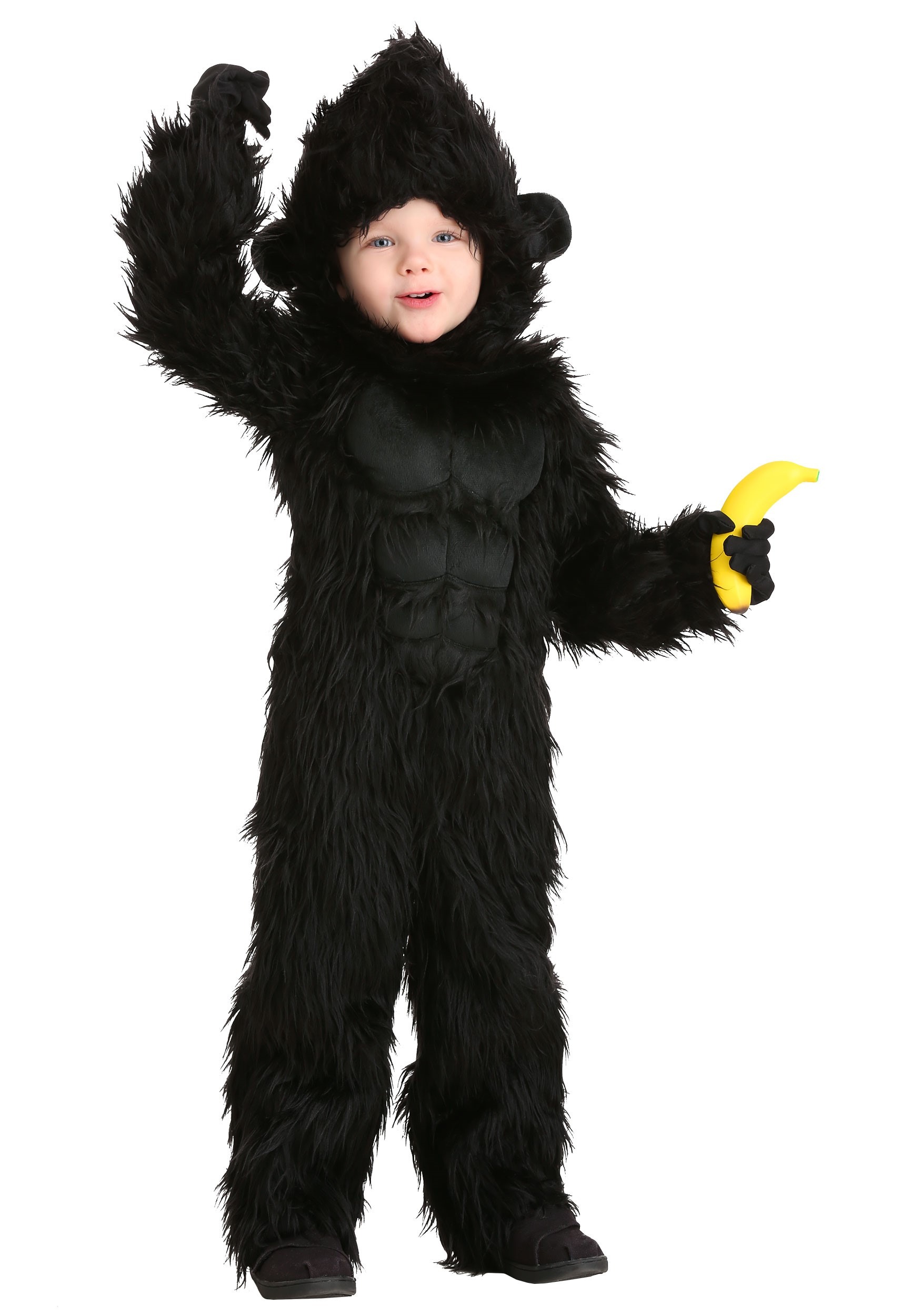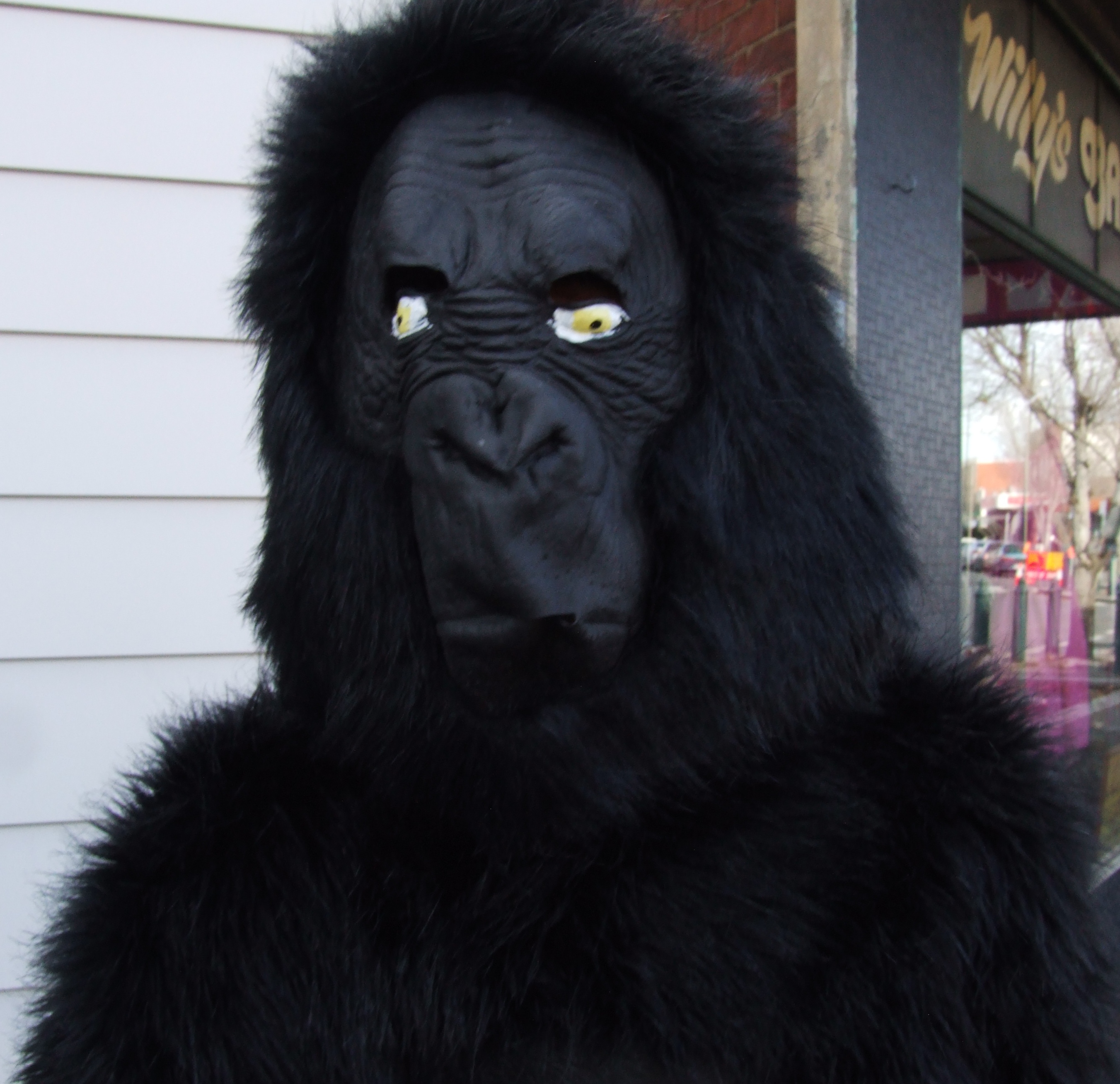

In recent decades, the work of performers/designers such as Rick Baker have altered the mechanics and effect of gorilla suits, often utilizing animatronics, taxidermy eyes, realistic fur, and other aides to provide a more realistic mimicking of genuine apes. In all such cases, the person inside the gorilla suit is uncredited, and research has yet to identify the performers. Perhaps recognizing this fact, Jim Henson utilized typical gorilla suits, and never a full-bodied gorilla Muppet, in several productions as a comic throw-away gag. In this respect, gorilla suits are not far removed from puppetry. Gorilla suit performance involves pantomime, wearing a heavy costume, broad physical comedy skills, and a partial suspension of disbelief, while still playing on the very artifice involved.

The most notable story in the tome revolves around a hapless fellow named Fenster, who dares to mock the concept of National Gorilla Suit Day and is thus repeatedly pummeled by men in gorilla suits. The holiday was concocted by MAD cartoonist Don Martin in a 1964 paperback Don Martin Bounces Back!. In addition to the movies and Halloween, gorilla suits are recognized through National Gorilla Suit Day, which falls on January 31st every year. In the arena of children's television, one of the most prominent uses of the gorilla suit was on The Electric Company, through the regular character of the grunting Paul the Gorilla (played by Jim Boyd, named after first season head writer Paul Dooley). Law and Scrubs, which have contrived to have regular characters don the primate costume.
Gorilla suit series#
In later decades, in addition to abounding in B movies such as Bela Lugosi Meets a Brooklyn Gorilla, the gorilla suit came to prominence in television, in a wide range of series, from 1960s sitcoms like The Addams Family and The Beverly Hillbillies, which typically attempted to present their gorillas as "real," to more recent series such as L.A. The early history of the art of gorilla impersonation is foggy, but seems to date at least to the late 1920s, with the rise of Charles Gemora, an early practitioner of the art in such short films as Circus Lady and the Our Gang entry Bear Shooters. More often, it's used for a gag in which a character wears a gorilla suit, and at some point, becomes entangled with the real thing (typically, played by another actor in a suit). It has also seen extensive use in film, television, and comics, sometimes to symbolize a "real" gorilla. The traditional gorilla suit embodies both, and as such has become a popular Halloween or masquerade party costume.

Gorillas have long fascinated audiences, as a source of both awe and horror (as illustrated by King Kong), but also humor. Gorilla suits are full-bodied costumes loosely resembling gorillas or other large primates. Bunsen Honeydew is not being eaten by a man in a gorilla suit.


 0 kommentar(er)
0 kommentar(er)
